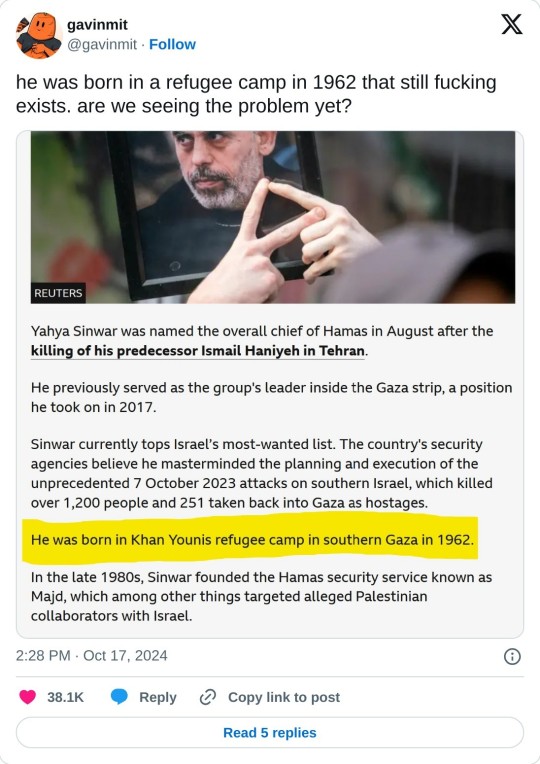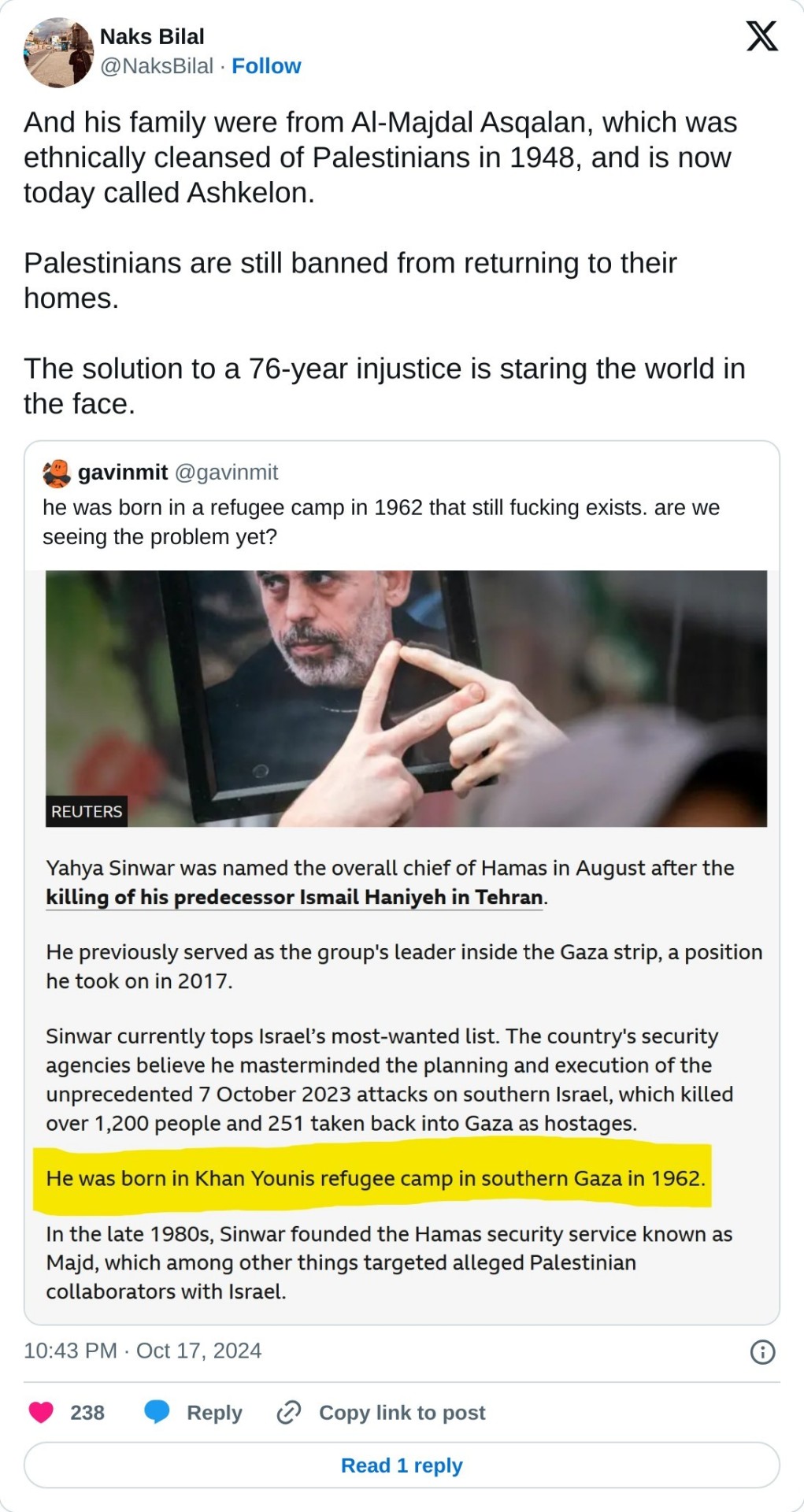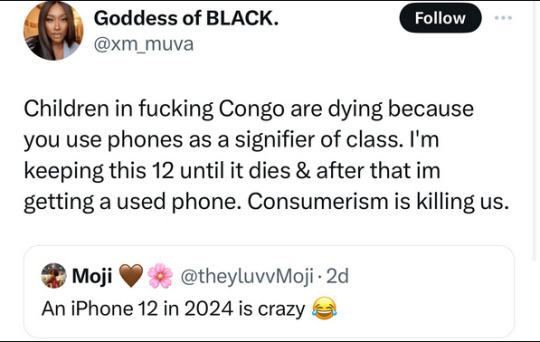#COLONIALISM
Explore tagged Tumblr posts
Text
People misrepresent Plymouth Rock by claiming it's "just a rock." It is actually less than a rock. It is a symbol of colonialism with blunt, gray edges, that is now no longer allowed to be played on or built with or even fucking eroded, if the state can steal some authority over that.
However! There is one way to make it back into a rock—a beautiful, wondrous, extant chunk of flesh of the planet we all call home. This highly comprehensive one-step plan, proposed by, among others, @isuggestlandback,
#plymouth rock#national monument#History#land back#indigenous rights#colonialism#decolonize#decolonization
110 notes
·
View notes
Text

Antoni Parera i Saurina (Spanish, 1868-1946) Monument to the Marquis de Comillas, ca.1919-22 Cadiz, Andalusia
Tribute to the second Marquis of Comillas Claudio Lopez Bru (1853-1925) who is also declared "adopted son of Cádiz." He inherited a great empire from his father Antonio López y López (1817-1883), who was a Spanish businessman, slave trader, and shipping magnate, founder of the Spanish Transatlantic Company, the General Tobacco Company of the Philippines, and the Catalan Luisa Bru Lassús.
#Antonio Parera#Antoni Parera#sculpture#spain#spanish art#spanish#1800s#art#fine art#european art#classical art#europe#european#fine arts#europa#mediterranean#cuban#Architect#Lluís Domènech i Montaner#colonization#colonialism#colonial era#colonial history#slave trade#barcelona#catalan#monument#blue sky#Angel#Cuba
26 notes
·
View notes
Text
Trade Deficit/Surplus and Their Relationship to Tariffs
Hey, let’s talk about trade imbalances and why they’re not an optimal way to dictate tariffs. A few people showed interest when I asked if I should talk about it, so I've written up about [checks] 3.2k about it.
(If you want to support me in writing these up and living my best life, you can prompt me for more on ko-fi. I'm trying to move out of my parents' house.)
Previously, I explained comparative advantages and why they can be a crucial indicator for what fields are a reasonable target for import/export taxes. Let’s have a quick recap:
A comparative advantage is when two countries are both capable of an industry, but one is much better at it. Ideally, the two countries have different specialties, and can complement each other. The classic example is England, specializing in wool, and Portugal, specializing in wine. Both countries could and did engage in both industries, but they put greater amounts of resources into their specialties and then traded. If Portugal did one quarter resources on wool (to maintain a domestic industry in case of a breakdown of trade relations or natural disaster) and three quarters resources on wine, they could trade part of that wine to England for the wool, and both countries would end up with more of the product due to specialization. England has better conditions for rearing sheep, and Portugal has better weather for growing grapes.
That is comparative advantage. If two countries are largely self-sufficient, and they have one industry respectively that stands out as exceptionally efficient each, then you see a trade balance: equal amounts of wine and wool exchanged, as measured by monetary value.
An imbalance occurs when one country sells drastically more of their product than the other. Say Portugal has a bad harvest, and makes less wine than usual. They then sell less to England, but may buy the same amount of wool as usual, dipping into savings or making their money elsewhere in order to buy. In that year, England is experiencing a trade surplus, and Portugal is experiencing a trade deficit.
Four things to cover:
The nature of an enduring imbalance in a stable economic system
Artificially enforced imbalances
Indirect profits
Excluded industries
What can cause an enduring imbalance?
Let us say that we have a closed economy of three countries.
Country A has good weather and soil, and so they specialize in agriculture and are a bread basket for the region. They are self-sufficient in terms of raw minerals or metals, but have little in the way of energy resources.
Country B has a large amount of energy; they have large deposits of gas and oil, and have built out infrastructure to capture energy from offshore wind farms and hydro as well. Their farmland is decent enough to support their population, but they have little in the way of metals and minerals to build those oil drills and windmills.
Country C has a strong mining industry, and is rich in mineral resources and key metals like iron and copper. They are self-sufficient in terms of energy, but their farmland is poor and they cannot easily feed their people.
To recap:
Country A: sells food, buys energy. Little trade in mining.
Country B: sells energy, buys metals and minerals. Little trade in agriculture.
Country C: sells metals and minerals, buys food. Little trade in energy.
You can probably see where this is going: Country A sells a lot of food to Country C, but doesn’t buy metals and minerals from them, so A has a trade surplus with C. Meanwhile, they buy a lot of energy from B, which doesn’t need their food, so there they have a trade deficit there.
Country A:
Buys energy from B: deficit
Sells food to C: surplus
Country B:
Buys metals and minerals from C: deficit
Sells energy to A: surplus
Country C:
Buys food from A: deficit
Sells metals and minerals to B: surplus
As you can see, any bilateral trade relationship in this closed system is heavily imbalanced. However, when taking the full scope of the system into account, it’s balanced, because all three are feeding into each other. They cover each others’ weaknesses, and so the trade is stable.
Introducing tariffs would disrupt that balance. If A starts to tariff energy from B, because they see it as a threat to their own minimal domestic industry, then they disincentivize purchasing energy. In turn, B’s profits fall, which means they have less money to buy metals and minerals from C, which means they have fewer resources to build wind farms and oil rigs, which means they have less energy to sell in the first place. This then also impacts C, which now isn’t making as much money from selling their mining products, which means they can’t buy as much food from A, and that means… the perceived deficit, which was stable, may have been shrunk, but so has the efficiency of the entire circle.
In a global economy, there is always a good chance that the ‘deficit’ is just part of a larger balance. India buys energy from Russia, which buys food from China, which buys tropical foods from Thailand, which buys machinery from Germany, which buys electronics from Japan, which buys minerals from Australia, which buys pharmaceuticals from… India.
This is very simplified, but you see what I’m getting at with the complexity of the web of international trade. One perceived deficit does not a holistic view make.
(This is especially true of imports that are near impossible domestically. We literally can’t grow coffee in the United States outside of Hawaii and a few island territories like Puerto Rico or American Samoa. There small attempts in California and Florida, but it’s not commercially viable. Most of them cannot grow enough to export to the rest of the US, especially when factoring in other high-demand foods that require these climates, such as oranges and bananas. While there are places in the US that can grow these tropical foods, those places are so limited that we just can’t grow enough of each and every one to meet demand, so those places specialize in the foods they can grow most effectively, which is how you end up with the majority of Florida’s exports, at least in terms of cash value, being citrus, peppers, and tomatoes.)
There are valid reasons for tariffs to be implemented as protectionist measures, even when specialization seems to dictate otherwise, and I covered that in my other post. However, the above is meant to illustrate that the simplified view of trade deficits as the only dictator of tariff policy is a very poorly thought-out exercise.
Let’s look at a case study of recently-implemented tariff policies: Lesotho.
Lesotho is a small country surrounded entirely by South Africa; it’s the largest sovereign enclave in the world (the others are San Marino and Vatican City). Lesotho is a fairly poor country. They cannot afford to import much from the United States, simply due to the low GDP per capita.
For reference, the US GDP per capita is over $86k.
South Africa, Lesotho’s nearest neighbor, has a GDP per capita of about $16k, adjusted for PPP.
Lesotho’s GDP per capita, adjusted for PPP, is about $3.2k. (These numbers were pulled from Wikipedia, current as of 2023-2025.)
The people of Lesotho, by and large, cannot buy goods from the United States.
Meanwhile, they have two major lines of export. One is garment manufacturing; much like China and Southeast Asia, the low wages ensure that garment costs are kept minimal, which the people of the US find palatable. These wages to the local population are low enough that they cannot in turn buy from the US. The other export is diamonds, an industry that heavily favors the upper classes when it comes to profits, again relying on comparably low local wages that have been the subject of union actions as recently as 2020.
This article from 2017 stated that garment workers earned about $96 per month; that number has doubtlessly changed in some way since then, but it’s definitely still in the ballpark of ‘skilled workers in Lesotho make in a month what minimum-wage Americans make in two or three days.’ This study from 2022 talks about the lack of general impact of the mining industry on the population of Lesotho, addressing the employment opportunities, impact on local resources like water and air quality, and how money is or isn’t cycled back into the community.
Because of the above, Lesotho has a notable trade imbalance with the US. From the US, this is a trade deficit. The US has a very diminished capacity for garment production due to outsourcing to cheaper pastures, and only one active diamond mine, which is used for tourism rather than commercial mining. We can’t make what they do, and they can’t afford what we do.
The trade imbalance with Lesotho is 120-130 billion USD, depending on the year. They export a lot to the US, and buy very little, and I’ve hopefully illustrated why.
The tariffs laid against Lesotho, a country that cannot realistically buy much from the US due to the general poverty, were set at 50% on Trump’s so-called liberation day.
So what would that accomplish, realistically?
Artificially Enforced Trade Imbalances
We now take a look at trade imbalances that are the results of manufactured pressures rather than natural ones.
With the earlier model, I covered three countries with complementary industries and a desire to cooperate in favor of overall better outcomes. That model assumes good faith.
The real world has Walmart. Also Amazon, Apple, SHEIN, TEMU, H&M, Zara, Target, and more.
Also, a history of colonialism.
…we need to go back a bit, for this one.
For several centuries, European powers had control over large portions of the Global South and East, for a variety of reasons that mostly involved spreading diseases and having guns. The East India Companies (Dutch and English) were major factors in this.
Let’s zoom in on England and India. England had partial or full control of India from 1757 to 1947. This was achieved through superior weaponry, a navy (controlled by the East India Company) that could blockade ports, and a generally higher willingness to commit crimes against locals. Due to English control over many aspects of trade and access to resources, the economy was aggressively molded to be in greater favor of the British. This includes deindustrialization, taxes that favored British imports over domestic products, and enforced trade barriers to other nations. A particularly notable example is the cotton trade; raw cotton would be shipped to the UK with no tariff, spun into threads and woven into fabric, and then sold back to India at a high tax rate. This meant that India was pressured into sending away a central pillar of their economy, and then sold that same product back at a massively inflated cost that they had to pay, because they no longer had the resources to do it domestically. This led to a widespread reduction in the infrastructure to make fabric as they had once been known for, along with a massive transfer of wealth from India to the UK, much of it under the oversight of the British East India Company.
This had a lasting impact on India, one that they’ve been working to recover from since before gaining independence. This is true of many countries that were colonized and exploited by the West, which includes most of Latin America, Africa, South Asia, and South-East Asia. Some of East Asia can be read broadly as having recovered, but few economies managed that kind of economic bounce-back, and few did so quickly.
These days, there is no British East India Company, as it was dissolved in the 1870s. Instead, we have companies like Walmart and Amazon. Their tactics involve a few less guns, but there is still a massive impact on things like local wages.
(The guns do still make an appearance; ever heard of union-busting?)
Due to the size of the American economy, military, and political influence, smaller economies with less power are pressured to submit to Western whims. America, in particular, gained a lot of international power with WWII, setting up bases all over the world, as well as experiencing a massive economic boom. The two factors combined resulted in an economy that could buy in bulk for sales at department stores, even setting up individual factories of their own in these countries that were, in many cases, only just achieving independence from their Western colonists. They were still in the agricultural period of economic growth, often due to forced de-industrialization like in India, and the manufacturing business was created by foreign investment, or by a government inviting such from foreigners.
Newly independent, struggling economies, searching for a way to strengthen their positions and banks. Factories, and a wealthy overseas client that wants all the goods you can make.
They will pay you pennies for it. Those are pennies you don’t have, and maybe you have a debt to pay off. Maybe the government incurred debts building those factories, and people have to work to pay that off, but once it’s paid, you’ll get the money for real!
(You know those $200k student loans you spend forever working off? Imagine that, but it's your regional government owing money to a foreign company.)
Or maybe they pay you decently, for now.
So, countries with decimated industries agree to work for these companies. They get into factories, sit down, and start sewing. They agree to do petroleum refinement because the US doesn’t want to stink up its own air anymore, could you do it instead, pretty please? They mine, or cut lumber, or destroy their own rivers making that pretty ‘vegan’ leather.
And your local economy is reliant on Walmart now, or Amazon, or Apple. Ninety percent of the town works for them, after all!
But inflation is a thing, so you ask for a raise.
And the factory says no.
In fact, they cut your wages. You’re making too much, they say. The shops in America want it cheaper, they claim. Too bad, so sad. If you don’t like it, go work somewhere else.
But the factory employs 90% of the town.
So because America wants cheap goods, there is a trade deficit: buy whatever you want from China, or Bangladesh, or Vietnam. They can’t afford to buy anything back, but that doesn’t matter, does it?
Oh hey, we are sending them so much money by buying all their stuff! That’s not fair, is it? They’re taking advantage of the United States by not buying any of our products. Let’s tariff them.
Western companies placed interminable barriers on these economies, and now the US government wants to punish the victims of those barriers. And that’s frustrating for many reasons, but a big one is this:
Indirect Profits
A lot of the ‘imports’ that the US gets are actually bringing a net profit.
Let’s say Apple set up a factory in China ten or twenty years ago. They are pretty entrenched as part of the economy, and it also took a long time to establish. There is nothing in the US that can replace it in a realistic timeframe.
Let’s say that iPhone takes $400 to build in China. $150 for parts, $250 for labor and overhead, and then toss on $5 for shipping, since that’s a cost that easy to scale. Bring that phone to the US or France or Singapore, sell it for $1000. That’s almost $600 in profit!
Something that is valued at $1000 gets tariffed at the $400, and then sales taxed at the $1000.
And that profit goes toooooooooooooooo Apple.
Back in the US. Except it’s actually Ireland. (They do this to avoid other taxes.)
(The Ireland situation is insane, by the way. They call it leprechaun economics. You can read about it, though this article is much more Accounting Terminology than most people looking to read.)
Now, I do need to clarify that the Trade Imbalance Numbers are still using that wholesale rate of $400, not $1000. So it doesn’t necessarily impact the trade numbers as massively as it could, but the end numbers are that the perceived value of the trade deficit isn’t the actual end value of the products being imported.
And the thing is, that profit still gets back to the US (technically Ireland), even when that phone goes to Germany or Nicaragua or Burundi or wherever else. The American company still gets the money, which then gets spent on physical imports like mangoes and cobalt.
The US takes advantage of China in this regard, because so much of that profit is pocketed by the parent company, in the US (technically Ireland), rather than the employees themselves. The given reason for this is that the Americans are bringing the product development and coding and marketing to the table.
Phone made in China, sold to Germany. Trade imbalance reflects the relationship between China and Germany, but the profits go to the United States: the US is making money that isn't reflected in trade deficits.
And that brings us to our last point:
Excluded Industries
Did you know that the trade deficit only counts physical goods?
These numbers do not include IP or service trades.
That art your friend in the UK commissioned you to draw does not factor in. The South Korean showings of the latest Marvel movie do not factor in. That Adobe Photoshop that someone downloaded in Brazil does not factor in. That Netflix subscription in Italy doesn’t factor in. That financial analyst getting paid by a US company to report on the Nikkei index in real time, from Japan, does not factor in. That head of operations that the US company is paying to run product distribution in Dubai does not factor in. That C drama you streamed in Colorado doesn’t count. That eBook you bought from a writer in Darfur doesn’t count. That app you bought from a company in Peru doesn’t count.
None of it counts.
None of this is included in the calculations. Even the WSJ is annoyed (that article is paywalled but I like their chart at the top, and that part is free to see).
Now, the services surplus isn’t enough to compensate for the trades surplus, but it doesn’t have to be. Remember: if you make something in Vietnam, and sell it in Spain, but the money still comes back to the US… that doesn’t count towards either side of the trade balance.
But it does raise the GDP.
(Unless you send the money to Ireland, maybe.)
Trade deficits are a genuinely bad thing to base your tariff policy on, in the sense that it cannot be the only factor. It can factor in—doing so with China in particular makes sense given shifts in the global market since the early 2000s, especially with regards to de minimus exemption—but it can’t be your sole deciding factor.
This is especially true when the government both isn’t doing it for the reason they claim (likely), or doesn’t understand what tariffs and trade deficits really do (Trump, at least, has been talking about this since the 1980s, so I’m pretty sure he actually believes in this, and thus doesn’t know the actual ramifications).
Conclusion
Sometimes you need to understand how comparative advantage and trade webs work before you take someone’s word for the nature of deficits. Tariffs play a role in the balance of trade and protection of domestic industry, but trade imbalances cannot be your only factor in deciding on tariffs, nor can tariffs be your only tool in reindustrialization.
Anyway. Prompt me for more on ko-fi or something. Help me move out of my parents' house.
#tariffs#politics#economics#economics for dummies#phoenix posts#phoenix politics#trade deficit#trade surplus#trade imbalances#trade policy#trade war#exports#imports#taxes#colonialism#imperialism#india#lesotho#united states#china#industry#industrialization#reindustrialization
35 notes
·
View notes
Text

#Bbc#israel#free palestine#politics#the settlers#the guardian#colonialism#anti colonialism#middle east#anti zionisim#Israel#documentary
16 notes
·
View notes
Text
No. Latin America is not "the parts of the Americas where a Latin family language is the dominant language".
iirc its contemporary use (though it was originally a French term actually) comes from a cold-war era American intelligence agency's designation. and obviously they viewed canada and louisiana differently than the brown people ready for neocolonial explotiation.
Hence why Haïti and la Guyane generally are considered part of latin america.
As the tariff debacle has shown, America would prefer to just view Québec as part of the anglosphere in-progress.
Is Quebec part of Latin america?
120 notes
·
View notes
Text

Keep talking about Palestine!
#free palestine#palestine#signal boost#gaza#from the river to the sea palestine will be free#social justice#palestine resources#colonialism#imperialism#jerusalem#the west bank#end the occupation#tel Aviv#human rights#united nations
74K notes
·
View notes
Text
"The shift from the Afro-Caribbean zombie to the U.S. zombie is clear: in Caribbean folklore, people are scared of becoming zombies, whereas in U.S. narratives people are scared of zombies. This shift is significant because it maps the movement from the zombie as victim (Caribbean) to the zombie as an aggressive and terrifying monster who consumes human flesh (U.S.). In Haitian folklore, for instance, zombies do not physically threaten people; rather, the threat comes from the voduon practice whereby the sorcerer (master) subjugates the individual by robbing the victim of free will, language and cognition. The zombie is enslaved."
— Justin D. Edwards, "Mapping Tropical Gothic in the Americas" in Tropical Gothic in Literature and Culture.
Follow Diary of a Philosopher for more quotes!
31K notes
·
View notes
Text
This elderly woman was one of the leaders of demonstrations against the Vietnam War in 1968, when she was a student at Columbia University. Today, 56 years later, she returns to the same place and says, "Palestine must be free."
#free palestine#palestine#gaza#free gaza#gaza strip#israel#gazaunderattack#colonialism#support palestine#imperialism#social justice#usa#columbia university#protest
43K notes
·
View notes
Text









Some quotes:



#yemen#jerusalem#tel aviv#current events#palestine#free palestine#gaza#free gaza#news on gaza#palestine news#news update#war news#war on gaza#yahya sinwar#hamas#palestinian resistance#al qassam brigades#colonialism#long post
20K notes
·
View notes
Text
West Papua’s Indigenous people have called for a boycott of KitKat, Smarties and Aero chocolate, Oreo biscuits and Ritz crackers, and the cosmetics brands Pantene and Herbal Essences, over alleged ecocide in their territory.
All are products that contain palm oil and are made, say the campaigners, by companies that source the ingredient directly from West Papua, which has been under Indonesian control since 1963 and where thousands of acres of rainforest are being cleared for agriculture.
More than 90 West Papuan tribes, political organisations and religious groups have endorsed the call for a boycott, which they say should continue until the people of West Papua are given the right to self-determination.
Raki Ap, a spokesperson for the United Liberation Movement for West Papua, which is overseeing the call, said: “These products are linked to human rights violations, in the first place, because West Papuans are being forced, with violence, to get off the land where they’ve lived for thousands of years, which has now resulted in ecocide.
“This is a signal to the countries who are dealing with Indonesia, especially those in the Pacific region, to take notice of who they’re dealing with and how they are basically allowing Indonesia to continue the colonial project in West Papua, the human rights violations, and also ecocide.”
West Papuans say more than 500,000 of their people have been killed by the occupation in the past six decades, while millions of acres of their ancestral lands have been destroyed for corporate profit. Indonesia, already the world’s largest palm oil exporter, is now breaking ground in West Papua on the world’s biggest single palm oil plantation, as well as a sugar cane and biofuel plantation that will be the largest deforestation project ever launched.
“West Papuans’, especially the ULMWP, position is very clear: we are a modern-day colony,” said Ap, speaking from the Netherlands.
“Indonesia hijacked the right to self-determination in 1962 when the Netherlands and Indonesia signed an agreement without any consultation in West Papua … After that, in 1969, there was a so-called referendum, which wasn’t fair, which wasn’t under international law, one man, one vote: just 1,025 men were handpicked at gunpoint to vote for integration to Indonesia.
“So this is the foundation of the Indonesia’s colonial project. When we became part of Indonesia against our will, basically the genocide unfolded.”
#palm oil#nestle#mondelez#proctor and gamble#west papua#indonesia#ecocide#colonialism#indigenous rights#deforestation
12K notes
·
View notes
Text


You'll have to turn sound on for this one
19K notes
·
View notes
Text
The US Military in Hawaii
25K notes
·
View notes
Text

#congo#the congo#congo genocide#free congo#palestine#free palestine#gaza#free gaza#israel#jerusalem#social justice#imperialism#colonialism#gaza strip#yemen#tel aviv#palestine news
53K notes
·
View notes
Text
"B-but Palestinians can get their freedom with peace not violence 🥺🥺" no. Screw your feelings. The armed resistance against colonizers and murderers is what will give Palestinians their freedom and what will eventually achieve real peace.
An enemy that bombs and uses white phosphorus against civilians doesn't know nor practice what your broken moral compass describes as "peace". Freedom was proven throughout history not to be achieved through kneeling and asking the oppressor to kindly stop. Freedom needs to be taken by force. Your little Utopian way of thinking doesn't work in the real world. Your feelings don't matter because you're not the one living under occupation. Your feelings don't matter because you're not one of the thousands of children who lost their limbs. You're not one of the children who became orphans due to this genocide. You're not the mother who lost her child to the carpet bombing. You're not the father carrying the remains of your child in plastic bags. You're not the newlywed woman who lost her husband. You're not the one at risk of either getting killed any second or losing your loved ones in the blink of an eye!
"Peace" is not really a thing you see during a live ethnic cleansing!
#free palestine#palestine#gaza#from the river to the sea palestine will be free#signal boost#social justice#palestine resources#colonialism#imperialism#jerusalem#the west bank#free gaza#yemen#tel aviv#gaza strip#the middle east#human rights#united nations
49K notes
·
View notes
